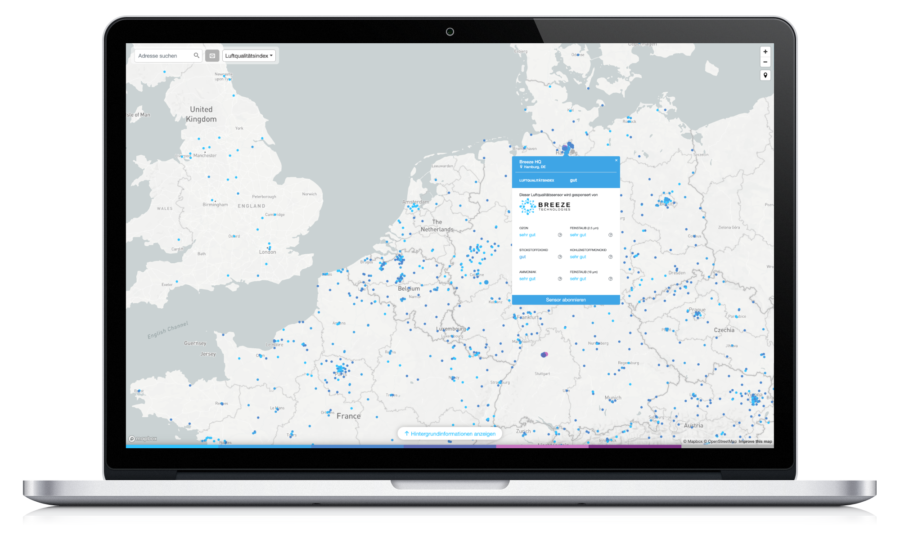Engaging your community on air quality
Air pollution affects everyone, and while in many countries it remains an invisible threat, public awareness about the issue has continued to rise throughout the last decade.
Hence many of our urban air quality monitoring projects with cities come about after inquiries of citizens to their municipal administration about the state of local air quality. Cities then start deploying monitoring technology to be able to answer citizen requests, either directly or through tools like our public air quality information portal.
But even when the initial impulse for an air quality project does not stem from a city’s population, but is rather initiated by the administration itself, involving citizens can have huge benefits on a city’s air quality management:
- Transparency and trust: Sharing data with the public and informing citizens about collected air quality datasets can help to increase public transparency, and the population’s trust in the effectiveness of their city administration. In some parts of the world, sharing collected data might even be mandatory due to policy or law.
- Acceptance and involvement in clean air action: If citizens are presented with data about the status quo and potential issues, clean air actions that have an effect of what they are and are not able to do in their neighborhood might be easier to accept. For instance, a new speed limit or vehicle limitations may be easier to stomach if they are accompanied with data about high pollution levels, and the intended and actual effect of the implemented measures. Showing the positive effect of clean air action policies with actual data could even motivate citizens to promote and share such efforts.
- Citizen enablement and protection: Sharing real-time data can also help particularly affected groups, such as young families, the elderly or chronically ill people, to protect themselves from areas with particularly high levels of pollution. Even regular people are able to make more informed decisions about when and where they partake in outdoor activities, such as outdoor sports.

Events like forums and workshops can be used to engage neighborhoods on collected air quality datasets and answer questions regarding the monitoring campaigns.
How to involve your community in air quality efforts
So how can you involve your local community in air quality monitoring and clean air action efforts? There are a couple of ways to do so:
- Involving citizens in monitoring campaigns: In several projects, we have been working with so-called „citizen sensor hosts“; members of the local community that have volunteered to host an air quality sensor on their private property, e.g. their balcony or front yard (in such cases, it is important to vet the potential monitoring location against respective location criteria). Working with citizens as sensor hosts can turn them into local air quality heroes. Data is collected where it matters most to them – directly outside their home – and made available to them and the public. This can turn members of the local community into air quality enthusiasts that are promoting the monitoring effort, collected insights and clean air actions in their social circles, thereby greatly enhancing the visibility and effect of such action.
- Sharing data with the public through appropriate tools and platforms: It is important to understand that the average citizen does not have an extensive background in air quality management, a highly scientific field of urban management. Hence they will not be able to interpret raw collected data without support and guidance; a measurement such as „42 µg/m3 NO2“ may mean nothing to them. It is therefore important to provide appropriate context to citizens when sharing collected datasets, such as interpreting the raw data based on (scientifically based) standards such as the European Common Air Quality Index (CAQI).
- Citizen forums, workshops, and other events: Events can supplement and enhance digital communication tools and campaigns. As air quality monitoring and management are such scientific fields, citizens are bound to have questions about the effort and the information shared online. Such events can be supported by scientific communicators that would be able to explain data and correlations, as well as municipal decision makers that can speak to the background and goals of the effort.

A public information portal on air quality, like Breeze Technologies‘ citizen portal, can help to create transparency and trust in your local community.
Start engaging your community on air quality
Engaging local communities on the air quality effort of your municipality can be a great tool to make the efforts of the municipal administration to increase the local quality of life visible. It can also support other environmental conservation efforts in the community, or even redevelopment efforts aimed at increasing the environmental quality of whole neighborhoods or districts.
Do not hesitate to reach out to us if you want to start working on air quality with your community. Breeze Technologies has extensive experience in such citizen-focussed projects, and we are happy to work with you to design a project that works best for your community.

 unsplash.com / Shane Rounce
unsplash.com / Shane Rounce Breeze Technologies
Breeze Technologies